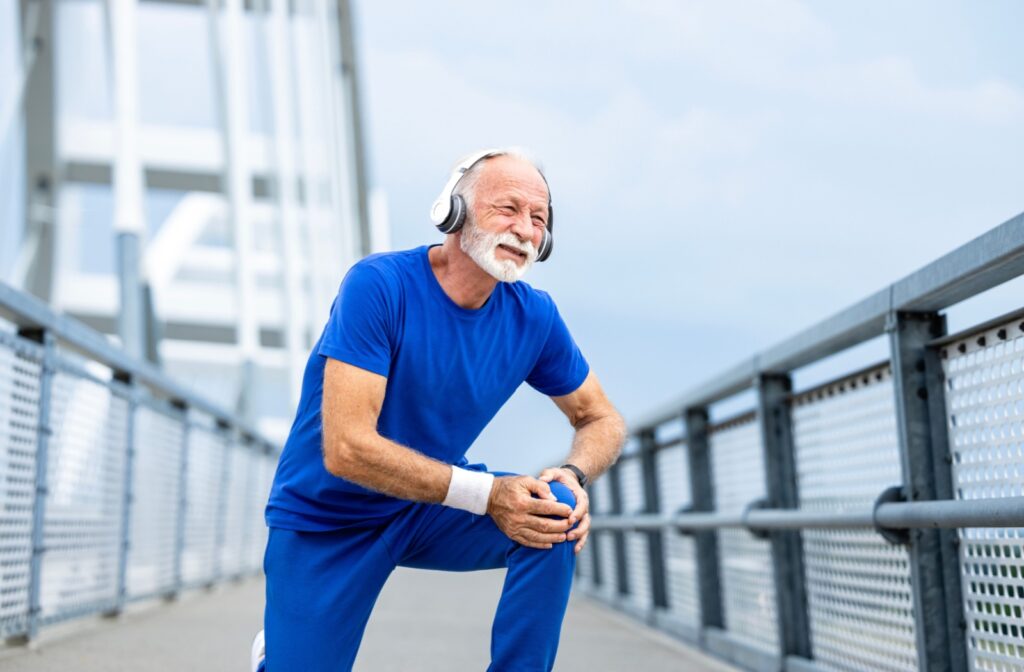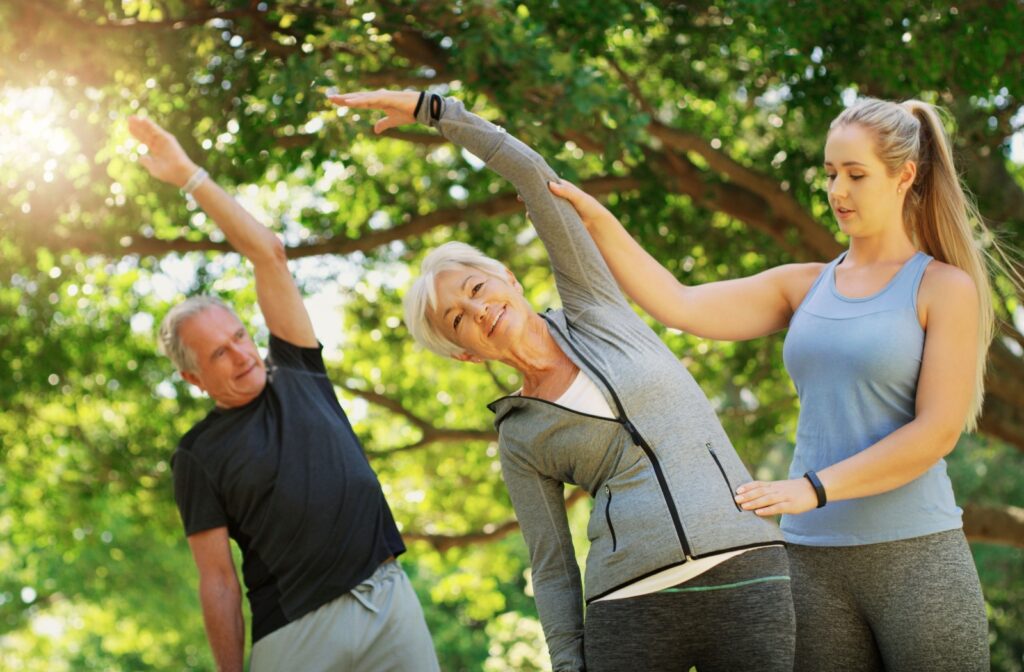Staying active is one of the best ways to maintain health and independence as we age. But how much exercise is too much for seniors?
While regular physical activity brings undeniable benefits—from improving mobility to boosting mental well-being—it is equally important to strike the right balance to avoid overexertion. Every senior’s body is different, but if muscle soreness lasts more than 2 – 3 days, sleeping becomes uncomfortable, or fatigue persists, it can indicate overexertion following exercise. The key is to find a balance that promotes health without causing strain.
At The Lodge at Truitt Homestead, we encourage a thoughtful approach to fitness that prioritizes safety, health, and enjoyment.
The Benefits of Exercise for Seniors
Engaging in regular physical activity offers numerous advantages for seniors:
- Improved physical health: Exercise helps strengthen muscles, support bone health, and enhance cardiovascular fitness, which contributes to overall vitality.
- Mental & emotional wellness: Activities like walking or yoga can reduce stress, alleviate symptoms of anxiety and depression, and even improve cognitive function.
- Independence & confidence: Exercise supports better balance and coordination, reducing the risk of falls and enabling seniors to maintain their independence longer.
While these benefits are substantial, overdoing it can diminish the positive effects and even lead to injury or discomfort.
What Is Too Much Exercise for Seniors?
Too much exercise can happen when the body is pushed beyond its capacity to recover and adapt. Overexertion doesn’t always present itself in obvious ways, but there are some clear warning signs to watch for:
- Persistent fatigue or exhaustion.
- Muscle soreness that lasts longer than 72 hours.
- Irritability, difficulty sleeping, or decreased interest in physical activity.
- Increased susceptibility to injuries.
Understanding these signs can help seniors avoid unnecessary strain while staying active.
Factors That Influence Exercise Limits
Every senior’s fitness journey is unique. Factors that determine the appropriate amount and intensity of exercise include:
- Age & overall health: Natural age-related changes, such as reduced muscle mass and joint flexibility, can impact exercise tolerance.
- Chronic conditions: Health issues like arthritis, osteoporosis, or heart disease may require tailored exercise routines.
- Medication effects: Some medications can affect energy levels or physical performance.
- Current fitness level: Seniors who have been active for years may have a higher capacity for exercise than those who are just starting out.
Guidelines for Safe Exercise
To reap the benefits of physical activity while minimizing risks, seniors can follow these general guidelines:
- Frequency & duration: Aim for 150 minutes of moderate aerobic activity per week, such as brisk walking or swimming. Include at least two days of strength training exercises.
- Intensity levels: Use the “talk test” to gauge intensity—you should be able to carry on a conversation without gasping for breath.
- Balanced workouts: Incorporate flexibility exercises like yoga or stretching to improve range of motion and balance-focused activities to reduce fall risk.
- Rest & recovery: Allow time for muscles to recover between workouts to prevent overuse injuries.
Risks of Overexercising

While exercise is beneficial, pushing beyond your limits can lead to:
- Increased risk of injury: Overexertion can cause strains, sprains, or even more serious injuries like fractures.
- Weakened immune system: Overtraining can suppress immunity, making you more vulnerable to illness.
- Exacerbation of chronic conditions: Excessive activity can worsen conditions like arthritis or heart disease.
Tips for Avoiding Overexertion
To ensure exercise remains a positive experience, consider these tips:
- Start slow: Gradually increase intensity and duration over time.
- Listen to your body: Pay attention to signs of pain, fatigue, or discomfort, and adjust your activities accordingly.
- Stay hydrated: Proper hydration is essential for maintaining energy levels and preventing muscle cramps.
- Work with a professional: A physical therapist or certified trainer can create a personalized fitness plan.
- Incorporate variety: Mix activities to avoid repetitive strain and keep workouts engaging.
When to Seek Medical Advice
Seniors should consult a healthcare provider if they experience:
- Persistent pain or discomfort during or after exercise.
- Sudden dizziness, shortness of breath, or chest pain.
- Difficulty performing daily tasks due to exercise fatigue.
It is always a good idea to speak with your doctor before starting a new exercise program, especially if you have pre-existing health concerns.
Encouraging Sustainable Activity
Finding joy in physical activity is key to staying motivated. Seniors might enjoy low-impact options like tai chi, water aerobics, or gardening. Group classes or walking clubs can also provide social benefits, adding an extra layer of enjoyment to your routine.
Live Healthily at The Lodge at Truitt Homestead
Exercise is essential to healthy aging, but balance is the key to long-term success. At The Lodge at Truitt Homestead, we encourage our residents to embrace active lifestyles while prioritizing their safety and well-being. If you’re unsure how much exercise is right for you, consult your healthcare provider or a fitness professional to create a plan that suits your needs. Remember, the goal is not just to move more but to move well and feel your best.
Contact us today to explore lifestyle options at The Lodge at Truitt Homestead.




